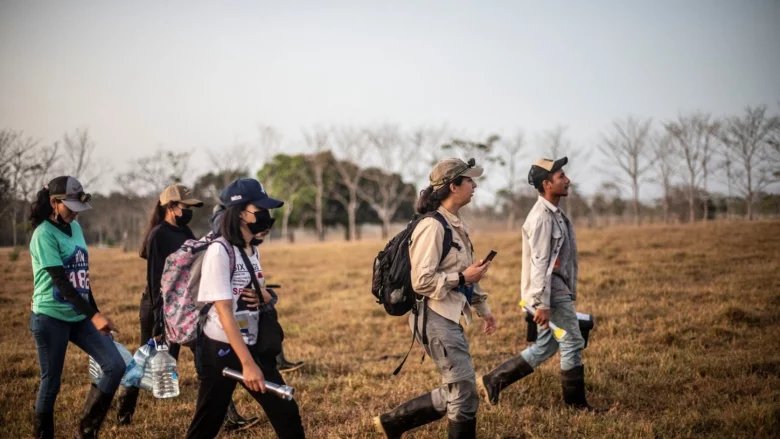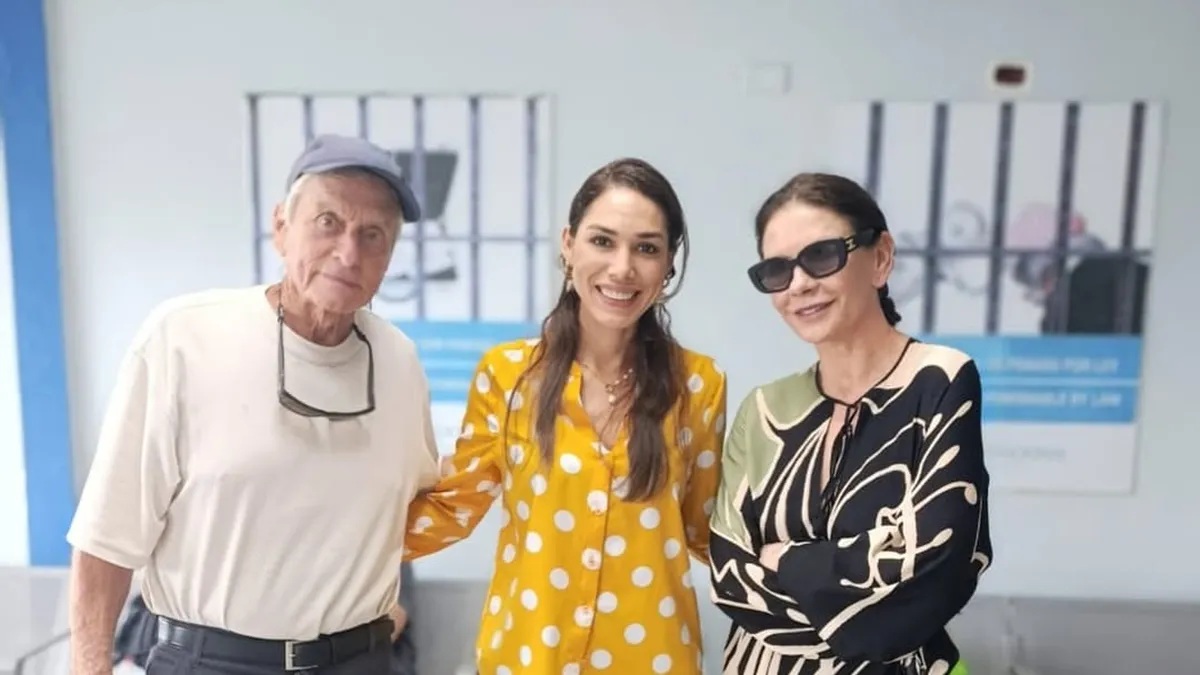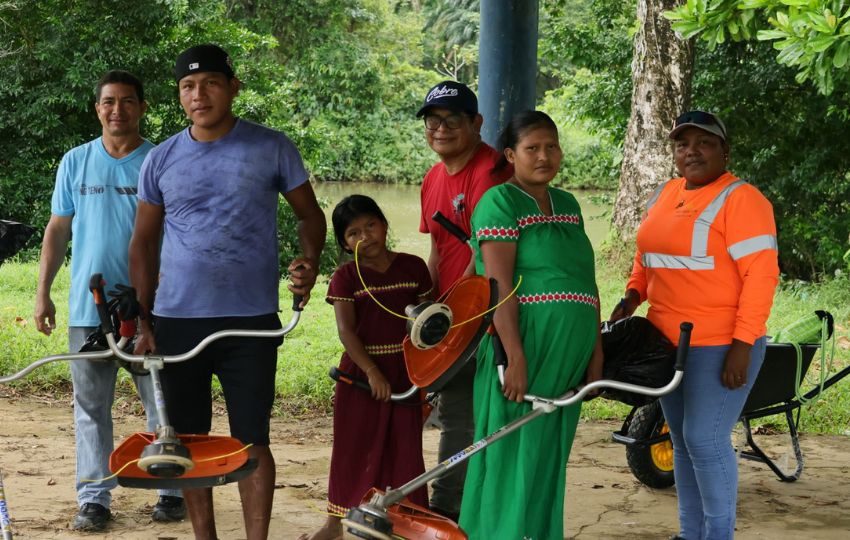Women Lead the Way Building a Sustainable Future for Jaguars in Panama

Panama is one of the most biologically diverse countries in the world. Its forests stretch across a land bridge that creates a natural corridor connecting habitats for the jaguar that roam from Mexico to Argentina. But this environment is under stress: over 40 percent of jaguar habitat has been lost.
One of the main threats is expansion of the agricultural frontier contributing to deforestation and habitat fragmentation. In recent decades, more forest has been lost than gained, with most of that loss due to cattle farming. This leads to more cattle overlapping with jaguar habitat and the creation of a common human-wildlife conflict scenario where jaguars prey on cattle and farmers retaliate by killing them.
In Panama, a Global Wildlife Program (GWP) project, funded by the Global Environment Facility (GEF), and executed by the Ministry of Environment and Yaguará Panamá Foundation with support from the UN Environment Program (UNEP), is working with cattle farmers in and around protected areas as part of its mission to promote coexistence between humans and wildlife. The GWP Panama project piloted a program with ten cattle ranches, three of them woman-owned, covering 336ha adjacent to the Darién National Park. This is the largest national park in Panama and the second largest protected forest in Central America.
It is estimated that a population of 280 jaguars moves through this park and diverse surrounding areas in the province of Darien, hunting a variety of animals like capybaras, deer, reptiles and peccaries. Now, with these ranches adding more cattle to the habitat, there is rising friction between the cattle farmers and jaguars.

As a first step to addressing this conflict, Yaguará Panamá Foundation has been conducting a census to quantify the number and movement of local jaguar populations. More than 141,000 hectares of core protected areas in the Chagres National Park-Darien National Park complex, covering six protected areas and three mixed landscapes between livestock farms, private reserves and forests, have been surveyed. The team worked in cooperation with authorities, companies, local communities and Indigenous Peoples, and has been especially deliberate about engaging women, to ensure broad buy-in from the local community.
Census teams were gender balanced and one was all women, making it more likely they could increase engagement across a broader spectrum. Natalia Young, Director of Yaguará Panamá Foundation made this observation about the benefits of an intentional approach to including women in the project: “The incorporation of women brought multiple benefits. We are expanding the workforce, completing the census in a large geographic area and creating new opportunities for women. This demonstrates that women can and want to participate in conservation projects. It strengthened the execution of the project for us and reduced social inequalities in fields from which women are normally excluded, especially those that expand beyond gender stereotypes, such as scientific monitoring and GPS collaring of jaguars”.

Anti-predation measures like solar electric fences and scaring devices like lights and alarms help keep jaguars away. They also built safe areas for calf raising to protect the most vulnerable members of the herd. With the help of camera traps and GPS collars, the teams have been able to understand how many jaguars roam the area, track their movements to develop early warning systems and verify the initiative’s success.
Taking this approach to livestock management helps the producer avoid livestock predation, improves herd health, and maintains more efficient and profitable production systems. At the same time, it reduces human-wildlife conflict and generates economic alternatives like ecotourism that bring in additional income for families and the community.
Now that the project has demonstrated improved livestock production while living alongside jaguars, other farms in the area have expressed interest. Findings from the project are making it possible to expand with funding and expertise from a local scientific foundation.
Through this project, we see how a unique combination of science, technology, education and partnership with local communities redefines the relationship with nature and the wildlife with which they coexist. In this way, social changes result in a double win: more peaceful coexistence and inclusive prosperity alongside the jaguar, one of Panama’s national symbols of biodiversity.





